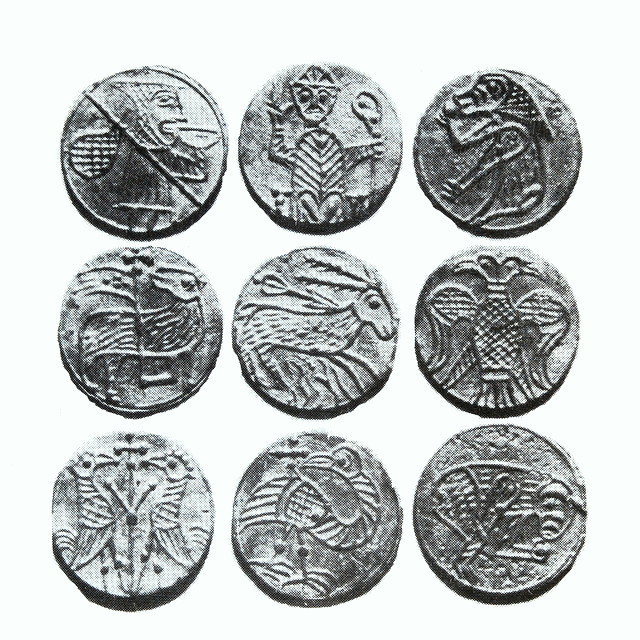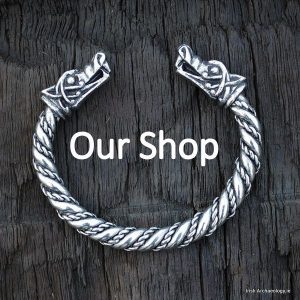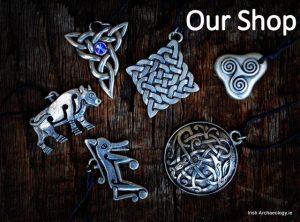
These distinctive pewter tokens were found by Brendán O’Riordáin during his archaeological excavations at Winetavern Street in Dublin. As its name suggests, this street was once famous for its taverns and it is likely that the tokens were originally used by local inn-keepers when normal coinage was scarce.
They were discovered inside a wood-lined cess-pit, where the tokens had been discarded sometime in the 13th century. They were closely clumped together, suggesting that the coins were deposited within an organic bag, possibly a leather purse or satchel (see image below).

In all 2,061 pewter tokens were uncovered, the majority of which contained a figure on one side, depicting either a human or an animal (an armorial device was found on the reverse). Some of the figures used included an ecclesiastic with a crozier, a pilgrim carrying a staff and drinking bowl, a bear-like animal, a deer wounded by an arrow and pairs of confronted birds.
The tokens appear to date to the period immediately proceeding the introduction of the round farthing by Edward I in 1279 AD. It is possible that pewter tokens such as these were declared illegal before this consignment of coins was put into circulation and this led to their disposal en masse in the pit (NMI 1985, p. 18).
References
National Museum of Ireland, 1985 Viking and Medieval Dublin, An Roinn Oideachais, Dublin
Ó Ríordán, A.B. 1971 ‘Excavations at High Street and Winetavern Street, Dublin’, Medieval Archaeology 15, 73-85



Michael Mitchiner and Anne Skinner did a thorough research on English tokens: British Numismatic Society Publications 1983/1984. They wrote that “during the medieval period token-makers were not considered to be ‘false moneyers’ and the tokens, themselves, were not viewed as ‘false coin’. So this is in contrast to the last paragraph.
Thanks very much for your comment Aron. The last paragraph was the opinion of the National Museum of Ireland in 1985, which I relayed (NMI 1985, p. 18). I will try and track down your reference, thanks for the heads-up. All the best, Colm
Can you shed light on the “Armorial device” shown on the reverse?
These are beautiful. Are they on display anywhere?